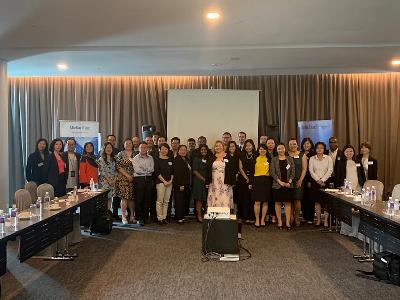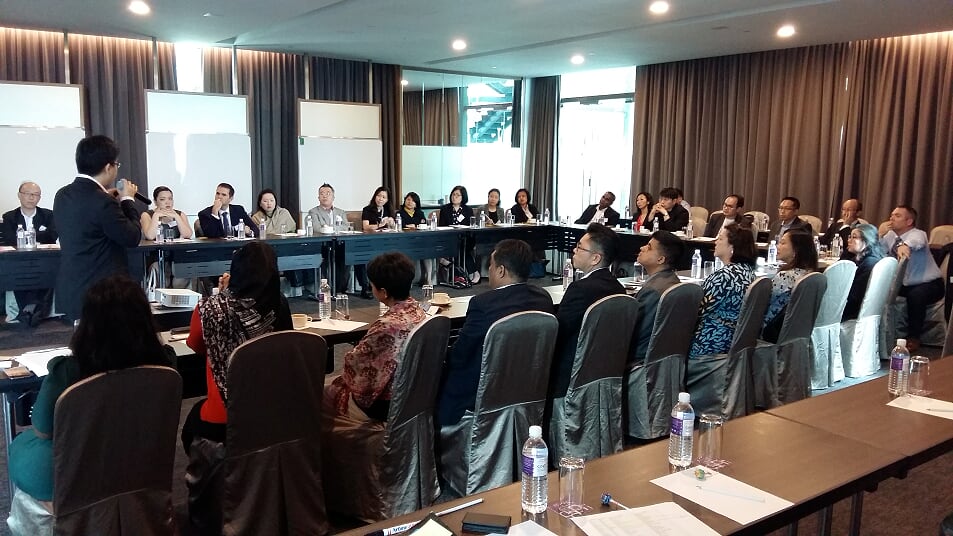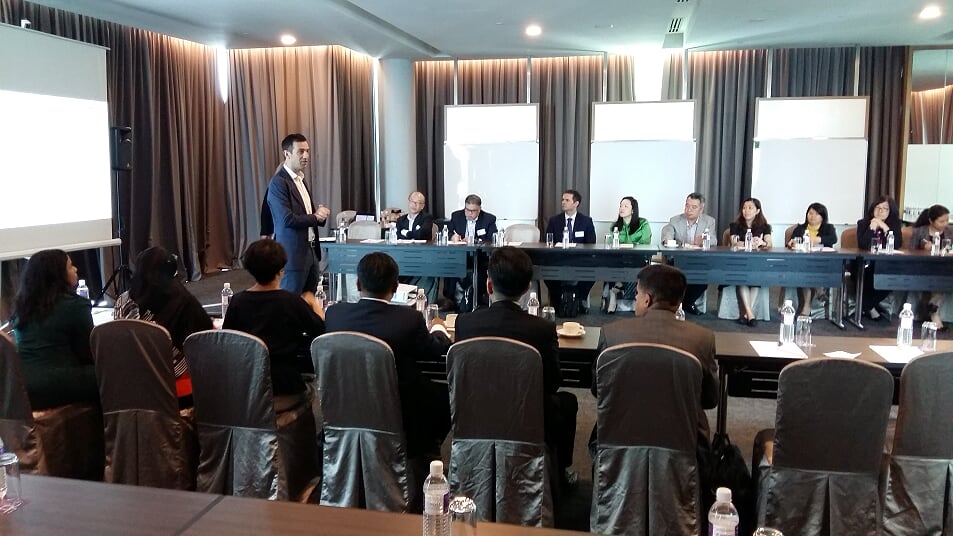 What are the key features of a successful FP&A professional? What are the roles of an FP&A team? How do you achieve team synergy? These are the topics that were discussed at the recent FP&A Board meeting in Kuala Lumpur which was sponsored by Michael Page and AFP.
What are the key features of a successful FP&A professional? What are the roles of an FP&A team? How do you achieve team synergy? These are the topics that were discussed at the recent FP&A Board meeting in Kuala Lumpur which was sponsored by Michael Page and AFP.
The meeting was attended by 32 senior finance professionals from large organizations such as Atalian Global Services, Davex Group, Evoluation Wellness, GroupM Malaysia, Maybank Group, SC Johnson, Schlumberger, Valmont Asia, Volvo Malaysia, Weir Minerals Malaysia and many others.
Introduction to FP&A Trends and Challenges
At the beginning of the meeting, Board members were asked to introduce themselves and name the most important attribute of an FP&A professional. The top three attributes were “Business Acumen”, “Analytical Skills” and “Strategic”.
Larysa Melnychuk, Founder of the International FP&A Board, shared with the group some of the other attributes such as good communication and stakeholder management skills, understanding of technology, good leadership, good interpreter of data, ability to see both the big picture and the details and creativity (a paramount skill).
Larysa also shared with the group the top 5 trends and challenges facing the FP&A profession. One of the trends is the need for Simplification, Speed & Agility; while one of the challenges is the reluctance of organizations to invest capital expenditure in up-to-date FP&A systems and technologies.
What Roles does an FP&A Professional Play in the Organisation?
Board members discussed four critical FP&A roles, namely, the Architect, the Analyst, the Storyteller and the Influencer (a framework adapted from Mark Gandy). Participants were asked to name any other roles played by an FP&A professional. “Design Thinker”, “Risk Manager”, “Change Enabler” and “Data Scientist” came to mind.
A few team members highlighted that the ability to tell the story using the data was a challenge, in addition to having on-time analytics to make decisions and the lack of real-time scenario planning using predictive analytics, machine learning, etc.

Building a Successful FP&A Team
After some lively discussion, Larysa shared insights on how to build a synergistic FP&A team using the Eight Behavioral Team Roles Model developed by Dr. Belbin. They are as follows:
- Resource Investigator – Finds external ideas to bring back to the team.
- Team Worker – Uses team versatility to make the teamwork running smoothly.
- Coordinator – The Chairperson of the team. Focuses on the team’s objectives and delegates work appropriately.
- Plant – Is very creative and good at solving problems in unconventional ways.
- Monitor Evaluator – Provides a logical eye and weighs up the team’s options in a dispassionate way.
- Shaper – Provides the necessary drive to ensure that the team does not lose focus.
- Implementer – Plans a workable strategy and carry it out as efficiently as possible.
- Completer Finisher – Used at the end of tasks to polish and scrutinize the work for errors, ensuring highest standards.
After a quick break, everyone was ready for the two great presentations by:
- Han Jon Goh, Regional Finance Director for Asia at Atalian Global Services. Han Jon shared how the company builds its FP&A teams utilizing many of Dr. Belbin’s 8 behavioral roles;
- Jothi-Ramalingam Sri Kanthan, Finance Director for Malaysia at Weir Minerals, who held various finance lead roles throughout his 22-year career, talked about his experience in building high-performance FP&A Teams.
Each presentation was followed by a robust Q&A session whereby the group was curious to learn more about the presenters’ experience.

Group Work Discussion
Before the group adjourned to the networking session with light refreshments, team members were divided into 4 groups and were given 15 minutes to discuss the key steps in building an effective (synergistic) FP&A team and later present on their findings:
- Need for a Sponsor (this is critical to ensure success)
- Infrastructure
- Team with a clear function with aligned culture
- Need for both team and individual KPIs, with clear matrix reporting
- Established inter-departmental collaboration
- Bring talent from other functions to complement the FP&A team
- Align FP&A team goals to the overall company’s needs
- Allocate time for self-development and improvement to allow team members to develop other areas of expertise
- Understand the strengths and weaknesses of each team member.
- Drive culture change to drive overall objectives.
- Develop a sense of ownership to make each team member stronger.
It was an enjoyable learning session on a Thursday afternoon, despite the team members’ busy schedules and Q2 financial closings. It was great to see 30 senior finance professionals come together for 3 hours and learn from each other’s experience, knowledge and insights.





